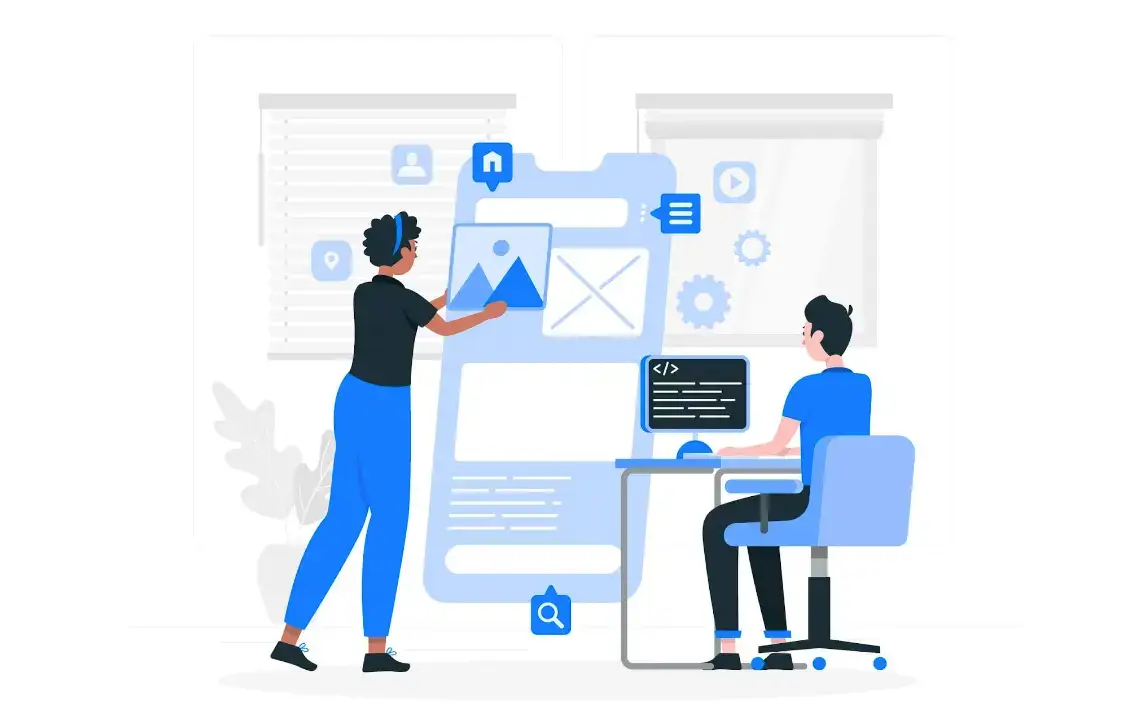Starting an eCommerce business and calling yourself an entrepreneur is pretty exciting. However, keeping up in the competitive industry takes a lot of work.
In fact, 9 out of 10 startups fail within a few years of operations. I am not telling you this to scare or make you nervous, but that’s fun about starting a business. Isn’t it?
You will make mistakes -- a lot of them, and everything will almost never go as you plan.
Accept that fact, and you’re ready to be an entrepreneur!
Sounds good? Let’s dive right in and look more closely at each of the seven most common mistakes to avoid. Click or tap a number below to skip to a mistake you are interested in learning more about.
7 Common Mistakes To Avoid While Launching Your eCommerce Business
- Not finding product-market fit
- Choosing the wrong eCommerce platform
- Not focusing on user experience
- Ineffective product description and listing details
- Overlooking business planning
- Not enough marketing
- Undermining the importance of security
From not writing a business plan to not finding an appropriate niche—here are seven mistakes you must consciously avoid while launching your eCommerce business.
1. Not finding product-market fit.
One of the greatest mistakes most eCommerce entrepreneurs make is not determining the viability of their product and service offerings.
Making a product and expecting it to work wonders in the market without analytical insights or actions can lead to eCommerce failure.
Solid market research of the product, target audience, demand, and competition is the foundational basis for your eCommerce business.
Here are a few questions that can help you find a product-market fit for your eCommerce business:
- Are competitors selling similar products? If so, does your product have a competitive edge?
- Is the product filling an unfulfilled gap? How does your product stand out?
- Are there customers willing to buy your product? If so, how much are they willing to pay?
- Is your product desirable enough to make people switch from their existing brands?
The foundational research at the initial stages will help you design the product and services appropriate for the market.
2. Choosing the wrong eCommerce platform.
There are hundreds of eCommerce platforms out there. Choosing a platform without any thorough consideration is probably not the best idea.
Cost is an essential factor when you choose an eCommerce platform. However, don’t let this single factor power your decision.
eCommerce platforms with negligent fees or freemium models offer only basic features. Moreover, they might not support a variety of tools that might be essential for your business.
Make a checklist of crucially important plugins, tools, and features to choose the ideal platform suited for your business.
Also, don’t forget to ensure that your chosen platform allows easy scalability for websites and web apps.
Additionally, consider the integration capabilities of the platform. An effective iPaaS solution can seamlessly connect your eCommerce platform with various business systems, ensuring streamlined operations and better data management.
3. Not focusing on user experience.
It is where most eCommerce businesses fail. More than 88% of the customers leave the website and never return because of the poorly developed user interface.
Many things on your website come together to summarize the overall user experience. However, here are a few things you must get right:
- Make the site easy to navigate: Make it simple for your customers. Don’t frustrate them with undefined pathways and complex product placements. Keep a clean menu bar with clearly defined sub-sections that allow visitors to roam mindfully in your little digital shopping world.
- Improvise the loading times: If the website load traffic exceeds 3 seconds, you lose more than 50% of your online traffic. That’s a lot. Invest in essential tech and tools and optimize your websites for faster loading times.
- Offer extensive payment options: This is one crucial factor determining if the visitor will convert into a customer. Offer multiple payment options to cater to ensure that your target customer gets what they need.
- Allow a guest checkout option: More than 50% of the customers abandon the cart because of mandatory account login. Allow guest checkouts to reduce the cart abandonment rate.
- Create a responsive design: More than 75% of the users online access a website through mobile devices. Make your website mobile responsive. If you do, you will likely retain a significant chunk of your potential traffic.
- Offer live chat support: People who shop online want their experience to be as seamless as possible. Live chat support acts as a live representative that will assist the visitors and increase the chances of conversions.
Dive deep into studying the aspects of successful websites. Understand where and what features contribute to delivering a satisfactory customer experience.
Implement, monitor, and continuously practice new changes to satisfy your users.
4. Ineffective product descriptions and listing details.
Exceptional products need exceptional presentation. You need to work to develop a comprehensive product page to ensure you stand out in a competitive marketplace.
A lot goes into developing an effective product page. Here are a few things that can help you optimize your product pages:
- SEO-driven content: You must optimize your product descriptions and all website content for SEO. If your sales rely on organic traffic, you simply must be SEO-friendly.
- HD quality images and videos: Hire a photographer or at least use a high-resolution camera to capture the essence of your product or service. A video will allow you to capture the products from different angles, allowing the viewers to understand your product completely.
- Get customer testimonials: According to a study, 93% of customers read an online review before buying a product. Having testimonials on your product page is essential to increase the chances of conversions. Spread the testimonials throughout your website instead of concentrating them in one place.
- Clean copies: Avoid making grammatical and spelling mistakes in your content. Write clean, precise, and on-point copies of your descriptions. Ensure visitors get all the essential information relating to products, shipping, pricing, discounts, refunds, and exchanges all in one place.
- Add FAQs: FAQs are the easiest way to answer customers' frequently repeated queries. Consider from a customer’s point of view and try answering a person's questions before purchasing.
Gather inspiration from successful eCommerce brands. Monitor their product pages closely and try mimicking their techniques for your business.
5. Overlooking business planning.
eCommerce is as complicated or even more than your traditional businesses. Just getting a product online won’t build you a successful business.
You need a business plan that lays your business goals, strategies, and policies in place.
Moreover, a business plan acts as a roadmap guiding you to run your business effortlessly, all while leaving room for changes within the plan.
You must write your business plan before you set up your business online.
It will help you identify overlooked areas of planning while making your business well-proofed against challenges in the future.
Source inspiration from relevant business plan examples online to help you write a fantastic plan.
And ensure that you add these critical components to your plan to make it comprehensive.
- Determining a business model
- Defining your niche
- Product and service categories
- Shipping strategies
- Pricing strategy
- eCommerce operations plan
- Vendors and suppliers for your eCommerce business
- Marketing strategies
- Financial projections
Writing an eCommerce business plan specific to your business can be challenging.
However, you may try a free business plan generator to prepare your concise plan in minutes.
Overall, well-proof your business with solid planning and execution before jumping in.
6. Not enough marketing.
Another mistake many entrepreneurs make is assuming that a great product will sell itself. Break that myth before it starts eating your business.
There are millions of eCommerce businesses selling myriads of products and services online.
You need a solid and consistent marketing plan to make your product noticeable and desirable.
Yes, marketing will take thousands of dollars every month. However, the results you get regarding revenue and brand popularity are always multi-fold.
Let’s show you some effective tactics for your brand and product marketing:
- Start with content marketing. SEO-driven blog posts and content will pull in potential customers for you and bring conversions.
- Use the data to form tailored ads and emails for your customers. Offer them an offer they can’t resist.
- Get the renowned influencers from your niche on board. Ask them to market your product amongst their followers.
- Get as many video testimonials as possible and use this social proof to strengthen your brand.
- Announce promotional offers like free shipping, products, or birthday discounts to retain your customers.
Remember to create a marketing mix for your brand and the products. Experiment with different marketing mixes and continuously monitor the results.
Keep experimenting till you figure out the strategies that work in your favor.
7. Undermining the importance of security.
You won't get a single sale if your website is not secure enough. Invest heavily in security tools and malware protection to secure the customer’s private data.
As the extent of eCommerce spreads, there is a spike in cyber attacks, phishing, and malware attacks, questioning the security of the biggest brands worldwide.
How do you improve website security? Well, these are the fundamentals to get started with:
- Get firewall protection
- Encrypt with SSL certification
- Get a domain hosting with HTTPS
- Use verified plugins
- Have a robust backup system
Regarding security, it’s better to leave no stone unturned.
Conclusion
Wrapping up, the central theme is to remove every barrier that can affect your customer’s experience while on your e-commerce store.
From navigation to information to the checkout process and everything in between- the simpler the process, the better the satisfaction.
Now, identify where your mistakes lie, take corrective measures one at a time, and your e-commerce business will flourish.
Author bio:

Vinay Kevadiya
Vinay Kevadiya is the founder and CEO of Upmetrics, the #1 business planning software.
His ultimate goal with Upmetrics is to revolutionize how entrepreneurs create, manage, and execute their business plans.
He enjoys sharing his insights on business planning and other relevant topics through his articles and blog posts.




